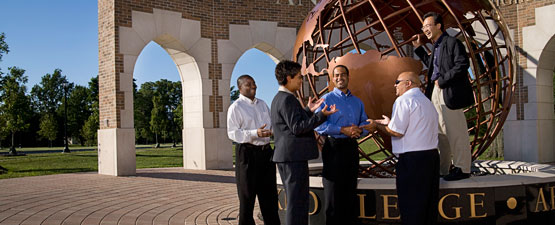Professional Dissertations DMin
Date of Award
2009
Document Type
Project Report
Degree Name
Doctor of Ministry
College
Seventh-day Adventist Theological Seminary
Program
Doctor of Ministry DMin
First Advisor
Kurt Johnson
Second Advisor
Donald C. James
Third Advisor
Russell Burrill
Abstract
Problem Church attendance is steadily declining throughout North America. Nevertheless, people are still seeking God, but it is occurring outside the church walls. The same trend is occurring in Florida where church attendance is below the national average. In response to this trend this project was to establish an Adventists house church within the Florida Conference of Seventh-day Adventists to assess a house church model’s front-line missionary viability. Method Following pre-launch work, one house church was launched in the North West Orlando area with two families (four adults and five small children). The project was evaluated for health, using Natural Church Development, and for effectiveness of frontline missionary viability.
Results Following ten months of work the following were observed: (1) average attendance was twenty-nine people (seventeen adults and twelve children); (2) thirty percent of adult attendance were unchurched people; (3) sixty-five percent of unchurched people returned a second time; (4) eight Adventist adults were trained to launch their own house church in a new location; (5) six baptisms were celebrated; (6) tithe and offerings totaled, $47,469.79 ($31,512.31 and $15,957.48 respectively); (7) two new house church locations were launched; (8) total attendance, since inception, averages for each of the three locations was twenty people, totaling a weekly Simple Church attendance of sixty people; (9) the Florida Conference received 100 percent of tithe; (10) no financial support (i.e., pastor’s salary) was received from the Florida Conference; and (11) approximately 90 percent of local offerings were used to help unchurched people and occasional emergency needs among house church participants.
Conclusions House churches, specifically Simple Church, operate out of a decentralized, grassroots paradigm that is faithful to the Seventh-day Adventist mission. This paradigm intentionally recaptures the New Testament and early Adventist roots by eliminating the professional clergy/lay person distinction. This elimination, in and of itself, naturally empowers lay-people to become Adventist front-line missionaries. Lay people realize that if they do not become missionaries, there are no professional clergy or Bible workers to whom they can shift their missionary responsibility. This awareness both calls and invites lay people to step up to the plate and once again take ownership of the unique message God has invited Seventh-day Adventists to share with the world–beginning with their unchurched neighbors.
Future Development The nature of this project carries with it ongoing development, change, and modifications. This project was officially completed March 31, 2009. Descriptions and explanations contained within this document are subject to change as the development of the Simple Church Network, which was the outcome of this project, continues to expand. Please contact the author by visiting http://www.SimpleChurchAtHome.com for update information on items found within this project dissertation.
Subject Area
House churches--Florida, Church development, New--Florida, Natural Church Development (NCD)
Recommended Citation
Adams, W. Milton, "Developing, Planting, and Multiplying an Adventist House Church Using Principles of Missiology in the Florida Conference of Seventh-day Adventists" (2009). Professional Dissertations DMin. 2.
https://dx.doi.org/10.32597/dmin/2/
https://digitalcommons.andrews.edu/dmin/2
Creative Commons License

This work is licensed under a Creative Commons Attribution-No Derivative Works 4.0 International License.
DOI
https://dx.doi.org/10.32597/dmin/2/
Files over 3MB may be slow to open. For best results, right-click and select "save as..."



